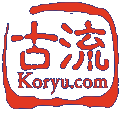History and Technique
Shindo Yoshin-ryu Jujutsu, founded 1864
Shindo Yoshin-ryu, founded in 1864, is a composite of two prominent jujutsu lineages, the Akiyama Yoshin-ryu line via Tenjin Shinyo-ryu, and the Nakamura Yoshin Ko-ryu line via Totsuka-ha Yoshin Ko-ryu. Its mainline teachings also include influences from Jikishinkage-ryu kenjutsu and Hokushin Itto-ryu kenjutsu while the Takamura-ha includes further influence from Matsuzaki Shinkage-ryu. The founder (ryuso) of Shindo Yoshin-ryu jujutsu was a renowned samurai and Kuroda Clan retainer named Matsuoka Katsunosuke.

Matsuoka Katsunosuke, Ryuso
Founder of Shindo Yoshin-ryu
Matsuoka Katsunosuke was one of the most accomplished samurai of the late Tokugawa era. Holding teaching licenses in Hozoin-ryu sojutsu from Komazawa Yoshitsugu, Jikishinkage-ryu kenjutsu from Sakakibara Kenkichi, Yoshin Ko-ryu from Totsuka Hikosuke, and Tenjin Shinyo-ryu jujutsu from Iso Matemaeon, Matsuoka also briefly studied Hokushin Itto-ryu kenjutsu with its founder, Chiba Shusaku.
Katsunosuke was born in Edo-Hantei, the Edo headquarters of the Kuroda clan in Kasumigaseki on the 26th of December, 1836. Katsunosuke opened his first dojo in 1858 in the Asakusa district of Edo where he taught Tenjin Shinyo-ryu jujutsu. In 1860, he was required to leave the running of this dojo to a subordinate, as he was appointed to teach kenjutsu and sojutsu by the Bakufu Kobusho (the government military training academy) as part of his duties to the Kuroda clan. When his kenjutsu teacher, Sakakibara Kenkichi, was hired to personally protect Shogun Tokugawa Iemochi, Matsuoka was ordered by the Kuroda Clan to temporarily ascend to the position of Jikishinkage-ryu Hombu-cho.
After the return of headmaster Sakakibara Kenkichi, Katsunosuke resumed teaching at his Tenjin Shinyo-ryu dojo in Edo. In 1862, Katsunosuke married a woman from Ueno village, north of Edo, and relocated there.
While continuing his training, Katsunosuke became convinced that the contemporary jujutsu systems of the late Edo period had lost much of their military usefulness, evolving into systems driven more by individual challenge matches than effective military engagement. He decided he would combine his knowledge of kenjutsu and jujutsu by formulating a new system of his own creation called Shindo Yoshin-ryu (新道揚心流), meaning “new willow spirit school.”
Katsunosuke wanted the new system to embrace the curriculum of a sogo bujutsu or integrated martial system–a study more militarily applicable. However, before the Shindo Yoshin-ryu curriculum was fully codified, political turmoil again forced Katsunosuke to leave his training to defend the Tokugawa Shogunate.
In 1866, Katsunosuke was ordered by the Kuroda clan to join the Bakufu Kobusho in forcefully quelling an uprising in Hitaka and Shimofusa. In 1867, as part of the “Seieitai,” Matsuoka functioned as a personal guard to Tokugawa Yoshinobu, where he witnessed the formal relinquishment of power by the Tokugawa Shogunate and the ascension to power of the Emperor Meiji (the “Taisai Hokon”).
In 1868, Tokugawa Yoshinobu returned to Edo and the Bakufu attempted to regain political control of the government. At the battle of Toba-Fushimi, Katsunosuke was shot in the back by forces loyal to the emperor. Although wounded, Katsunosuke managed to escape and returned to Ueno village. Since Tokugawa loyalists were viewed with much suspicion by the newly formed Imperial Government, Katsunosuke decided he would obscure his identity by adopting the name of his wife’s family, Ishijima. When he was fully recovered from his wounds, Katsunosuke decided to build a dojo in Ueno. At the new Ueno village dojo, Katsunosuke continued the development of Shindo Yoshin-ryu.
Like most samurai of the early Meiji era, Katsunosuke found himself impoverished with the loss of social status and regular income. So, in 1875, Katsunosuke followed his father’s path into medicine, opening a bonesetting and medical clinic adjoining the dojo. This vocation provided him with financial stability while he continued his dedication to martial arts.
Around this time Katsunosuke chose to alter the spelling of Shindo Yoshin-ryu to reflect “divine willow spirit tradition” (神道揚心流) in contrast to “new willow spirit tradition” (新道揚心流).
In 1884, Katsunosuke received official permission to run a medical clinic in Ueno and in 1887 received official amnesty from the imperial government. Katsunosuke then resumed publicly using the family name of Matsuoka and named his dojo the Matsuoka Shindokan.
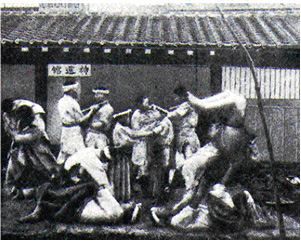
From: History of Ueno village, 1954
In subsequent years the Matsuoka Shindokan dojo gained the reputation of being one of the finest dojos in Japan, with students listed in the school’s register numbering in the thousands. Katsunosuke was visited by many famous budoka of the era seeking training. Katsunosuke remained undefeated in numerous challenge matches during this period, bolstering his reputation throughout Japan.
By the 1890s, an aging Katsunosuke was without a family member extensively trained in Shindo Yoshin-ryu to carry the tradition forward. It became obvious that the future of Shindo Yoshin-ryu would need to be guaranteed by temporarily appointing a headmaster outside of the Matsuoka family. Katsunosuke had several instructors holding a license of full transmission (menkyo kaiden). One was the headquarters dojo kangicho (general secretary), Inose Motokichi. Another was the Asakusa shibu dojo-cho (branch dojo director), Ohbata Shigeta. Inose Motokichi, the senior of these two men, was chosen to be the second generation headmaster. With this appointment came the understanding that Katsunosuke’s young grandson, Tatsuo, would take over as 3rd generation headmaster when he reached adulthood.
With the promotion of Inose Motokichi to 2nd generation headmaster, Asakusa shibu dojo-cho, Ohbata Shigeta requested and was authorized to separate from the mainline headquarters and oversee his own independent Shindo Yoshin-ryu branch. In time this branch of Shindo Yoshin-ryu became the Ohbata-ha Shindo Yoshin-ryu.
Ryuso Matsuoka Katsunosuke died in 1898, a member of the the last generation of true samurai and one of the last personal body guards of the Tokugawa Shogun.
After Matsuoka Katsunosuke
Prior to the death of Matsuoka Katsunosuke, Shindo Yoshin-ryu had effectively split into two different lines, the mainline headed by Inose Motokichi in Akeno, and the Ohbata-ha headed by Ohbata Shigeta located in Tokyo. Following the death of Matsuoka, these two lines of Shindo Yoshin-ryu evolved in different directions, reflecting the differing mindset and technical character of their respective headmasters.
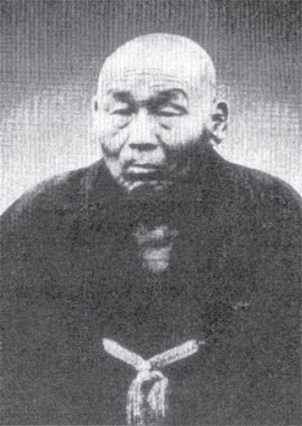
Inose Motokichi, Hombu-Cho
2nd Headmaster of the mainline
Shindo Yoshin-ryu was still in its infancy at a time that saw great changes in the classical martial arts of Japan, including the ascension of Jigoro Kano’s new Kodokan judo, a modern form of budo encompassing the curriculum and theory of many classical jujutsu schools. The mainline school of Inose, significantly influenced by the surging political power of Kodokan Judo, altered the Shindo Yoshin-ryu curriculum to reflect a more Kano-esque approach. With this alteration, Inose mostly abandoned the military/sogo bujutsu formula embraced by Katsunosuke, favoring instead the newer judo model, driven by the performance of unarmed shiai (contests).
Competitive shiai required technical modification to allow for full power and full speed execution of technique that would not result in severe injury or death. As a result, many classical jujutsu techniques and associated weapon applications were altered or abandoned. It must be remembered that the modernization of jujutsu into judo and kenjutsu into kendo made practical financial sense to those of the samurai class who saw their cultural status evaporate with the Meiji Restoration; teaching commoners was a means to survival in this new economic environment. Furthermore, western military tactics and weaponry had recently proved that the classical bujutsu of the samurai were ineffective on the modern battlefield. There was little incentive to maintain the old ways of combat when faced with these new tactical realities.
Inose Motokichi’s efforts were successful and he oversaw training at the Matsuoka Shindokan dojo in Akeno for many years. His enrollment book includes thousands of students from Ibaraki, Tochigi, and Gumma prefectures. Training in Shindo Yoshin-ryu also continued in nearby Shimotsuma at the Genbukan dojo, under the direction of a licensed student of Motokichi named Nakayama Tatsusaburo. It was Nakayama who taught Ohtsuka Hironori, the founder of Wado-ryu karate.
In 1917, Inose Motokichi honored the wishes of the Matsuoka family and returned the control of the Matsuoka Shindokan dojo and the headmastership of Shindo Yoshin-ryu to the founder’s grandson, Matsuoka Tatsuo.
Inose Motokichi passed away in March of 1921 at the age of 77. In 1940, a monument was raised in his honor at the Inose family home by Matsuoka Tatsuo.
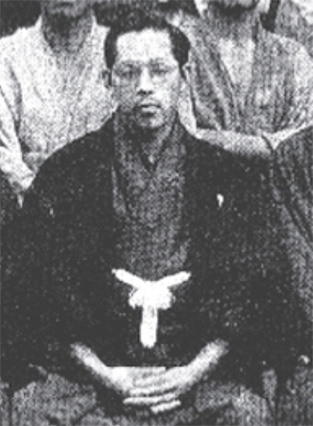
Matsuoka Tatsuo, Hombu-cho
3rd Headmaster of the mainline
Matsuoka Tatsuo was selected as a child to eventually accede to the position of 3rd generation headmaster of Shindo Yoshin-ryu, thereby continuing the martial tradition founded by his grandfather. Following another family tradition, Tatsuo chose to pursue an occupation in medicine, graduating from the Tokyo Medical College in 1917.
During Tatsuo’s years in Tokyo, he began training in judo at the Kodokan to complement his study of classical jujutsu. Upon his graduation from medical school, Tatsuo returned to Akeno, where he was formally appointed by Inose to the position of 3rd generation Shindo Yoshin-ryu headmaster and hombu-cho of the Matsuoka Shindokan dojo.
In 1923 Tatsuo moved to nearby Shimodate City where he opened a medical clinic. He left the running of the Matsuoka Shindokan dojo to his cousin Matsuoka Nobuatsu. Tatsuo continued his dedication to budo throughout his life, evidenced by the fact that in addition to being headmaster of Shindo Yoshin-ryu, he was an accomplished instructor of Kodokan judo, eventually attaining the rank of 7th dan.
Matsuoka Tatsuo became a prominent citizen of Shimodate and was elected to four terms as mayor of the city. He passed away in 1989 without formally appointing a successor for Shindo Yoshin-ryu. With his passing, the mainline headmastership transmission ended, and there was no 4th generation headmaster.
The remaining students of mainline Shindo Yoshin-ryu elected Dr. Ryozo Fujiwara to lead a new group called the Shindo Yoshin-ryu Domonkai. Dr. Fujiwara presently functions as the director of the Shindo Yoshin-ryu Domonkai and is the Shindo Yoshin-ryu representative to the Nippon Kobudo Kyokai. Unfortunately, it appears no dojo or students of mainline Shindo Yoshin-ryu are actively training in Japan. With the passing of the members of the Shindo Yoshin-ryu Domonkai, the transmission of the Shindo Yoshin-ryu mainline will end.
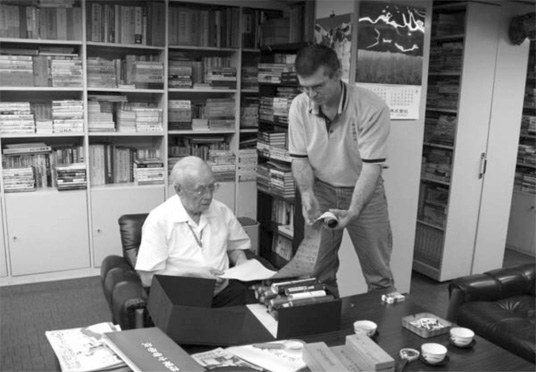
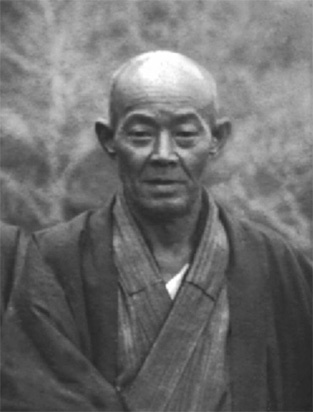
Ohbata Shigeta and the Ohbata-ha
1st Headmaster of the Ohbata/Takamura line
Unlike the mainline, following the death of founder Matsuoka Katsunosuke, the Ohbata-ha Shindo Yoshin-ryu clung to its classical roots, continuing to embrace a curriculum comprising an older style sogo bujutsu. This was a risky decision, as classical budo was viewed with either suspicion or indifference by Meiji era Japanese. The years following the fall of the Tokugawa Shogunate were very challenging for those individuals who refused to submit to the cultural realities of the time. Ohbata Shigeta, reportedly a staunchly conservative individual, greatly disliked the modernization of budo.
Despite the prevailing mood of the times, Shigeta still managed to maintain a modest following of students into the early 20th century. A beneficiary of a formal education due to his family’s ex-samurai status, Shigeta gained a position as a writer for a newspaper. This fortunate employment enabled him to provide financially for his family, while allowing him the freedom to continue teaching classical budo.
With the modernization of Japan’s military in the early 20th century, classical budo slowly experienced a resurgence of popularity, and enrollment steadily grew at Shigeta’s dojo in Tokyo.
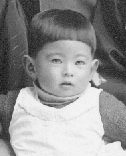
In 1899 Shigeta had a son Hideyoshi, whom he groomed to follow in his footsteps. Hideyoshi was extensively trained in Shindo Yoshin-ryu and was intended to be Shigeta’s successor.
In 1918 Hideyoshi joined Japan’s military and soon after married. In 1928, Hideyoshi fathered a son named Yukiyoshi. It would be Shigeta’s grandson, Yukiyoshi, who would ultimately lead the Ohbata-ha Shindo Yoshin-ryu into the future.
The devastating effects of WWII on Japan almost snuffed out the Ohbata-ha Shindo Yoshin-ryu, as most of its practitioners were killed in the war. Shigeta’s son Hideyoshi was killed in the Pacific in the spring of 1944. After the death of his son, Shigeta formally selected his grandson, Ohbata Yukiyoshi, as his successor. He then sent him away from Tokyo for safety. Following a premonition of death, Shigeta admonished one of his top students, Namishiro Matsuhiro, to complete Yukiyoshi’s training in the event he did not survive the war. Ohbata Shigeta was killed and the Ohbata Eibukan dojo destroyed during the firebombing of Tokyo in 1945.
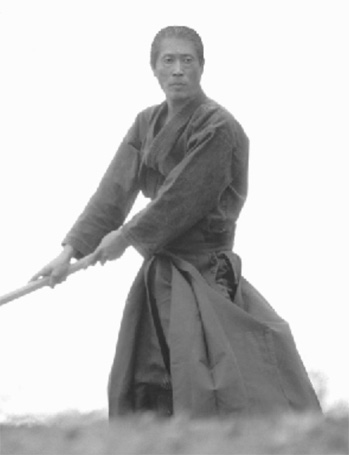
Takamura Yukiyoshi & the Takamura-ha
2nd Headmaster of Ohbata/Takamura line
Ohbata Yukiyoshi’s training continued under the instruction of Namishiro Matsuhiro. Namishiro was a fully licensed budoka of Ohbata-ha Shindo Yoshin-ryu jujutsu and Matsuzaki Shinkage-ryu kenjutsu. It was through Namishiro Matsuhiro’s expertise in Matsuzaki Shinkage-ryu that the original weapons syllabus of Ohbata-ha Shindo Yoshin-ryu survived.
Following the allied occupation of Japan, Yukiyoshi took the family name of his mother, Takamura, and relocated to Sweden.
Namishiro and Yukiyoshi maintained contact through this period, training in both Sweden and Japan. Living in Stockholm during this period, Yukiyoshi began teaching Shindo Yoshin-ryu to a small group of judoka and wrestlers. This group comprised the first students outside Japan to learn authentic Shindo Yoshin-ryu. One of these students, Karen Andersson, became the first instructor issued a teaching license in Shindo Yoshin-ryu outside Japan.
In the early 1960s Yukiyoshi met and married a Japanese-American woman and relocated to Hayward, California. In 1966 Yukiyoshi visited Namishiro Matsuhiro in Osaka and there met a Shindo Yoshin-ryu classmate from before the war named Takagi Iso. In subsequent visits to Japan, Iso convinced Yukiyoshi to begin teaching Shindo Yoshin-ryu in the United States. Martial arts were becoming very popular in the United States at this time, so Yukiyoshi quickly cultivated a small but dedicated group of students. With a slight adjustment to the curriculum in 1968, Yukiyoshi decided to rename the art Takamura-ha Shindo Yoshin-ryu and founded an organization to oversee the promotion of the art. This was the birth of the Takamura-ha Shindo Yoshin Kai. This organization slowly grew in membership over the next twenty years and by the mid-1980s the Takamura-ha Shindo Yoshin Kai supported ten dojos and fifteen licensed instructors teaching in America, the Philippines, Japan and Europe.
In 1999, the Takamura-ha Shindo Yoshin Kai emerged from relative obscurity when the publisher of a popular budo magazine called Aikido Journal asked to interview Takamura Yukiyoshi. Aikido Journal’s publisher, Stan Pranin, a well-respected budo historian, became interested in Takamura Yukiyoshi after reading a short interview conducted by the editor of a kendo newsletter in the United States. Several phone conversations and a series of e-mail exchanges resulted in an interview that Stan Pranin still considers the most popular in the history of his magazine.
Takamura Yukiyoshi passed away in March of 2000 at the age of 72 following a long illness. In the decade prior to his death he awarded three students menkyo kaiden in Takamura-ha Shindo Yoshin-ryu. These were Takagi Iso, David Maynard, and Toby Threadgill. In 2003 Takagi Iso and David Maynard retired from active teaching and Toby Threadgill was asked to oversee the organization worldwide. The Takamura-ha Shindo Yoshin Kai continues today under the direction of Toby Threadgill with its headquarters dojo located in Evergreen, Colorado, USA. Its worldwide membership, as listed in the kai’s eimeiroku, numbers around one hundred.

The Curriculum
The teachings of Takamura-ha Shindo Yoshin-ryu are organized in a manner consistent with most classical schools of budo. The teachings are divided into three levels represented by the issuing of teaching licenses. These are shoden, chuden and joden gokui. An administrative license also exists which represents ultimate authority over the issuing of all these licenses. This administrative license is called a menkyo kaiden. As with most classical schools of budo, there is no technical ranking methodology in Takamura-ha Shindo Yoshin-ryu similar to the kyu/dan system commonly associated with modern forms of budo.

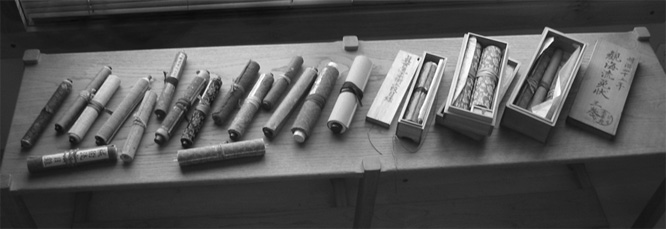
Property of the Takamura Shindo Yoshin Kai

The Shoden Mokuroku (Basic Level Catalog)
The shoden level teachings are organized on two separate scrolls or densho. The first is called the “Shoden Taijutsu no Mokuroku” and includes the taijutsu kata. These are techniques in which the shidachi (person executing the technique) is unarmed while the uchidachi (person receiving the technique) is either armed or unarmed. The shoden taijutsu kata emphasize proper distance, evasive movement, disruptive striking and body control consistent with the basic principles of Shindo Yoshin-ryu jujutsu. The second scroll is called the “Shoden Buki no Mokuroku” and includes the buki kata. These are techniques where the shidachi is armed while the uchidachi is either armed or unarmed. These kata emphasize the basic handling, tactics and principles employed in utilizing classical Japanese weaponry. Included in this area of study are battojutsu, kenjutsu, tantojutsu, and armed grappling. There are a total of 84 kata included in the shoden level curriculum.
The Chuden Mokuroku (Intermediate Level Catalog)
The chuden level teachings are organized much like the shoden, on two separate densho, however the chuden mokuroku is much more extensive in volume and depth. It comprises the bulk of the Takamura-ha Shindo Yoshin-ryu curriculum. The “Chuden Taijutsu no Mokuroku” lists 135 kata and also includes an extensive compilation of physical principles and combat tactics. The “Chuden Buki no Mokuroku” lists 66 kata and covers the use of daito, shoto, tanto, tetsubo, kogai, torinawa and armed grappling. A small section of chuden mokuroku kata are identified as kogusoku and katchu, implying combat in armor. Rounding out the chuden teachings are Shinto norito and haishi intended for execution in various esoteric rituals. These are meant to instill the proper moral and mental context one should maintain while undertaking training in Takamura-ha Shindo Yoshin-ryu.
The Joden Gokui (High Level Study and Secret Teachings)
The joden level teachings are separated into two densho, identified as the “Jin no Maki” (Scroll of Man) and the “Ten no Maki” (Scroll of Heaven). The “Jin no Maki” delves deeply into the most technically challenging area of study through a category of advanced level kata identified as myoden (mysterious teachings). These kata encompass the application of advanced principles, which include the study of internal energy, mental disruption, mental inertia, involuntary reflex, and other theories associated with creating or exploiting mental and physical deficiencies. Further study includes advanced vital point striking, resuscitation and healing. The “Ten no Maki” outlines study associated with esoteric Shinto as well as how to properly approach morality and human frailties. Mankind’s proper place on earth as well as its proper place in the universe is of significant importance in the “Ten no Maki”; without understanding these concepts in their proper context it is believed that the knowledge contained in the Yoshin Kai’s teachings can become corrupted and reflect the malevolent motivation of setsuninto (the sword that takes life), instead of the benevolent motivation of katsujinken (the sword that preserves life).
The last teachings received are the oku-kuden or orally taught secrets. These are only passed verbally to those being awarded the menkyo kaiden. These encompass political strategy, further spiritual incantations, administrative duties and insights employed to identify future leaders for the Takamura-ha Shindo Yoshin Kai.
Shingo Ohgami
Co-author Shingo Ohgami was born in Japan in 1941 and trained in Wado-ryu Karate at Tokyo University Karate Club under headmaster Hironori Ohtsuka from 1960 to 1965. In 1969 he was invited to Sweden as a guest researcher in chemistry, however, in 1972 the demands operating a successful dojo resulted in his abandoning an occupation in chemistry to pursue teaching budo full-time.
Shingo Ohgami is the chief instructor of Swedish Karatedo Wadokai and chief instructor of Karateklubb Samurai-dojo in Gothenburg, Sweden; he holds the rank of 7th dan from the JKF Wadokai. He also holds teaching licenses in Mugai-ryu iaido (6th dan) and Shindo Muso-ryu jodo (5th dan). He has been actively teaching T’ai chi Ch’uan since 1973.
Mr. Ohgami has been passionately committed to historical budo research more than 30 years and has authored several extremely popular books on Wado-ryu. He is the editor of the quarterly magazine Swedish Karatedo Wadokai, and is a member of the Japanese Budo Academy.
References:
Akiyama Yoshin-ryu jujutsu, Hyoroi Tesu no maki, Bunsei 10 (1827)
Tenjin Shinyo-ryu Yawarajutsu, Chi no maki, Meiji 34 (1901)
Tenjin Shinyo-ryu Jujutsu Gokui Kyoju Zukai, Matauemon Iso, 1893
History of Shindo Yoshin-ryu and Wado-ryu, Yukiyoshi Takamura, 1982
Shindo Yoshin-ryu no Reikishi to Giho, Dr Ryozo Fujiwara, 1983
Tokyo Daigaku Karate Gijutsu Kenkyu, Vol. 3, 1988
Biography of Shigeta Ohbata, Yukiyoshi and Mariko Takamura, 1989
Svenska Wadokai, NR#120, Shindo Yoshin-ryu, Shingo Ohgami, 2006
Further information and photos utilized in the compilation of this essay were drawn from proprietary documents, records and interviews which are the property of the Takamura-ha Shindo Yoshin Kai, Toby Threadgill and/or Shingo Ohgami.
Copyright ©2008 Toby Threadgill & Shingo Ohgami. All rights reserved.
